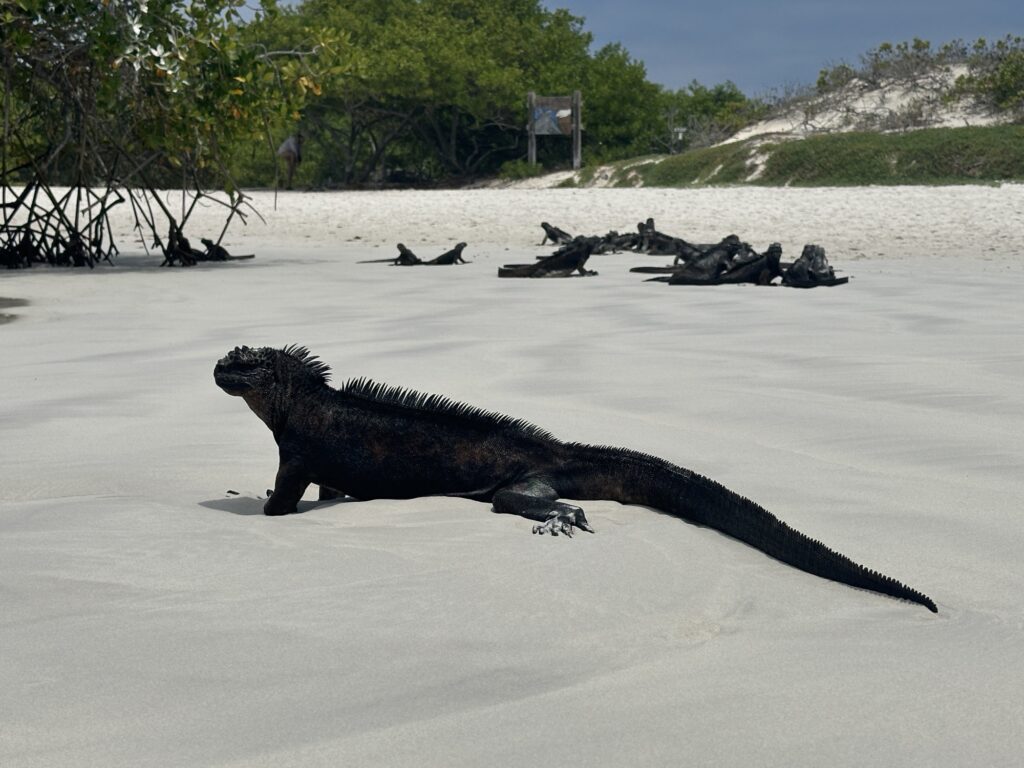Sailing to Galapagos requires real preparation, for sure. You have to get a local agent, and they brief you well in advance on what the different prerequisites are. Getting the visa to enter here with your boat takes about 4-6 weeks, so it is important to plan ahead of time.
Among some of the things sailors need to do, are:
– Hire a professional diver to clean the hull 24-48 hours before leaving the previous port. This is to ensure there are no new algae or other organisms introduced to Galapagos.
– Hire a fumigation service to fumigate the boat 24-48 hours before leaving the last port. This is to ensure there are no foreign insects being introduced to Galapagos.
– Ensure there are no items of certain fruits with seeds they do not want, like chia, passion fruit and oranges, as well as certain food items, such as fresh meat and cheese.
In addition, there was quite a bit of paperwork needed. However, this would give us a visa to stay up to 60 days, which gives us the opportunity to truly explore this very unique place.
The Galapagos archipelago is home to many endemic species that only can be found here. It consists of a total of 127 islands, with 18 of them being of substantial size. The region is part of Ecuador, and lies 800nm from Panama City, where we left from.
We spent about one week sailing/drifting/motoring to reach the first island, Santa Cruz, one of four islands we are allowed to sail to. We were greeted in the main city of Santa Cruz, Puerto Ayora, by a total of eight officials as well as our agent. A thorough inspection of our boat was done, to ensure we had followed all rules.
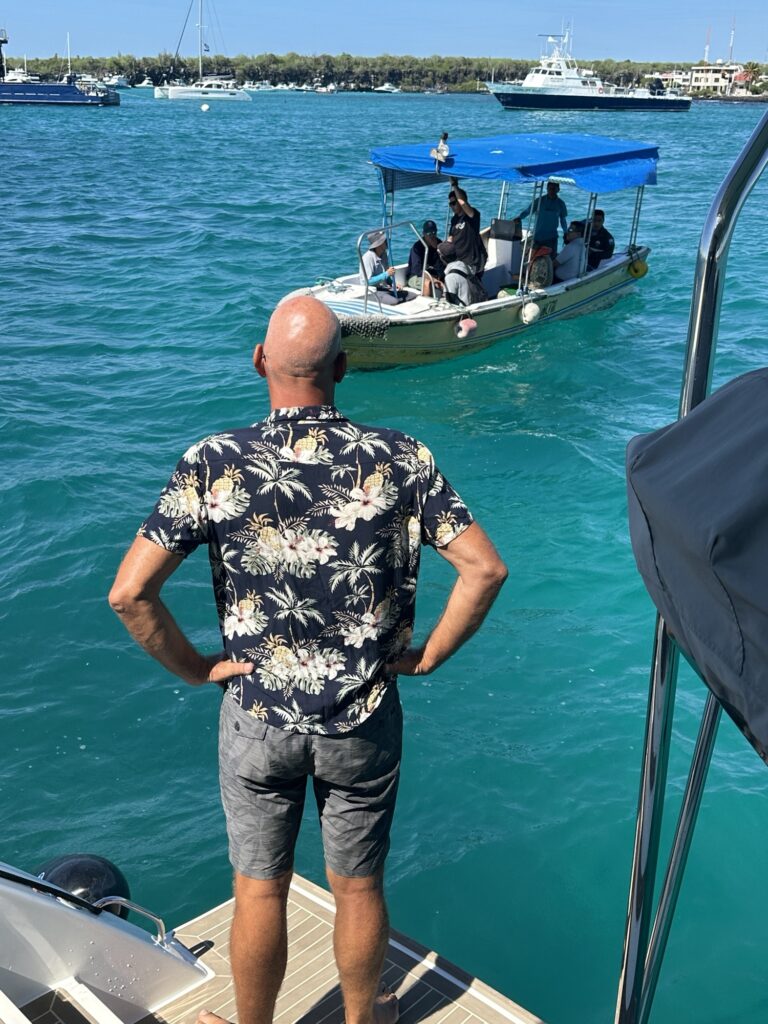
After 30 minutes of filling out forms, people inspecting our storage rooms and cabinets, as well as filming the conditions of our hulls, we were officially checked into Ecuador and Galapagos.
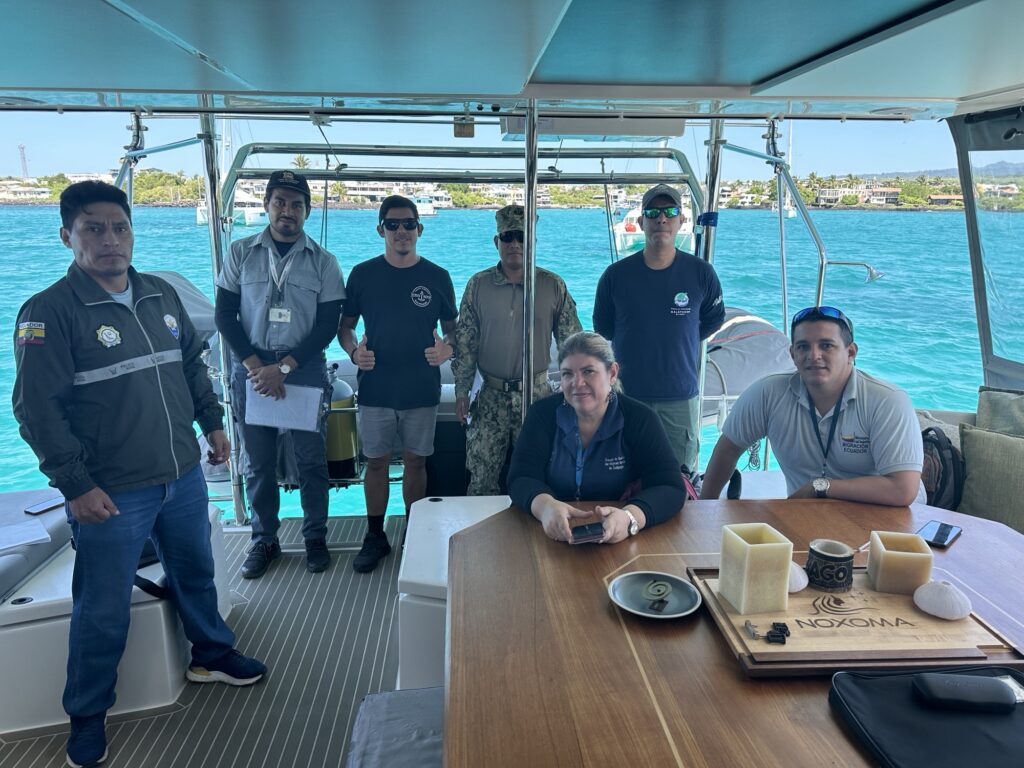
The captain wanted to check the anchor before we headed into town, and dived into the water. There was quite bad visibility, but the admiral quickly saw that the captain had about eight sharks on his tail as he swam towards the anchor. The captain was quite surprised as he went under water to try to see the anchor in rather bad visibility, and there was a shark heading straight towards him. His immediate reaction was to punch him on the snout, and this seemed to do the trick! He immediately turned away and left the scene. And so did the captain 😅
As he returned to the boat, we identified the sharks as being black tip reef sharks, and there were many of them! It turned out that they are just curious, and we are not on their menu, though. But, it did take a couple of days until both of us were comfortable swimming at the anchorage.
We learned that the sharks really enjoyed being under our boat, and when we dropped the swimming ladder, we often had 20 sharks popping over to see what this was. Even though we are not on their menu, diving into a school of 20-30 sharks is a little bit intimidating…
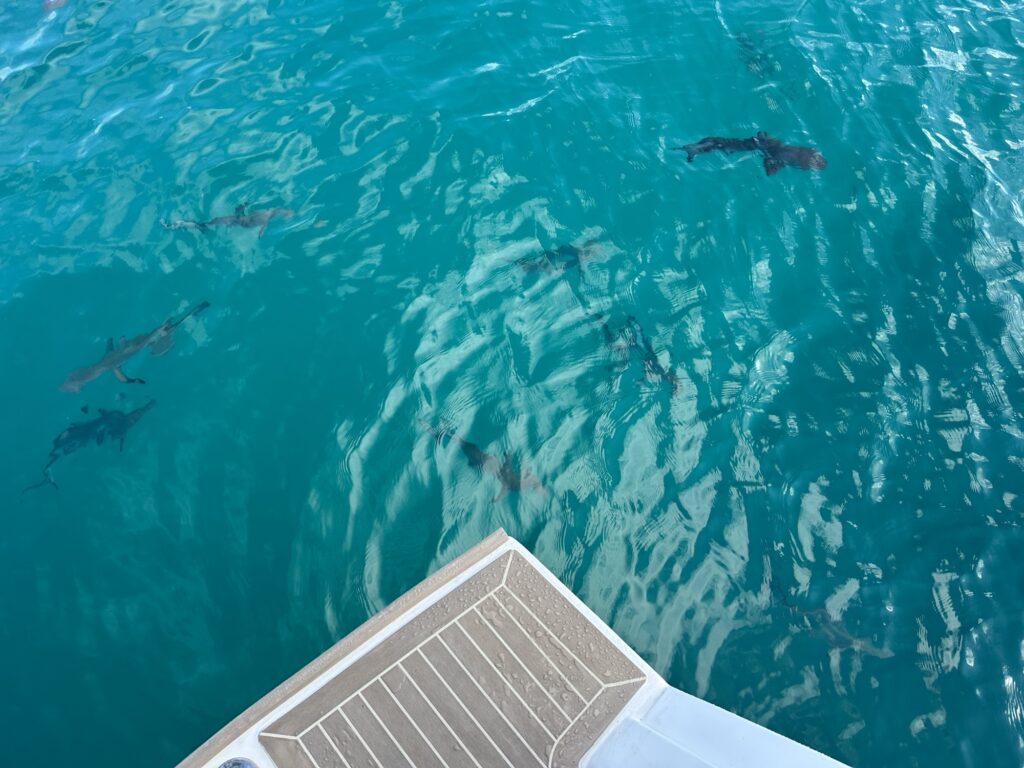
We took one of the many water taxis into town, and quickly witnessed just how rich the animal life are on these islands.
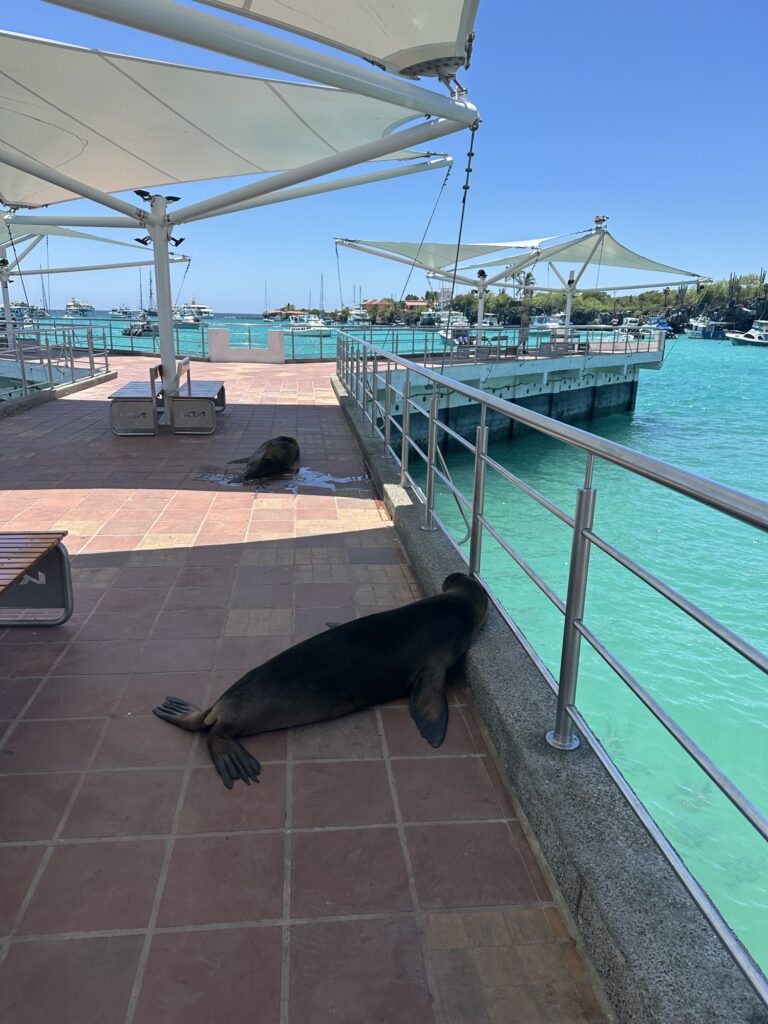
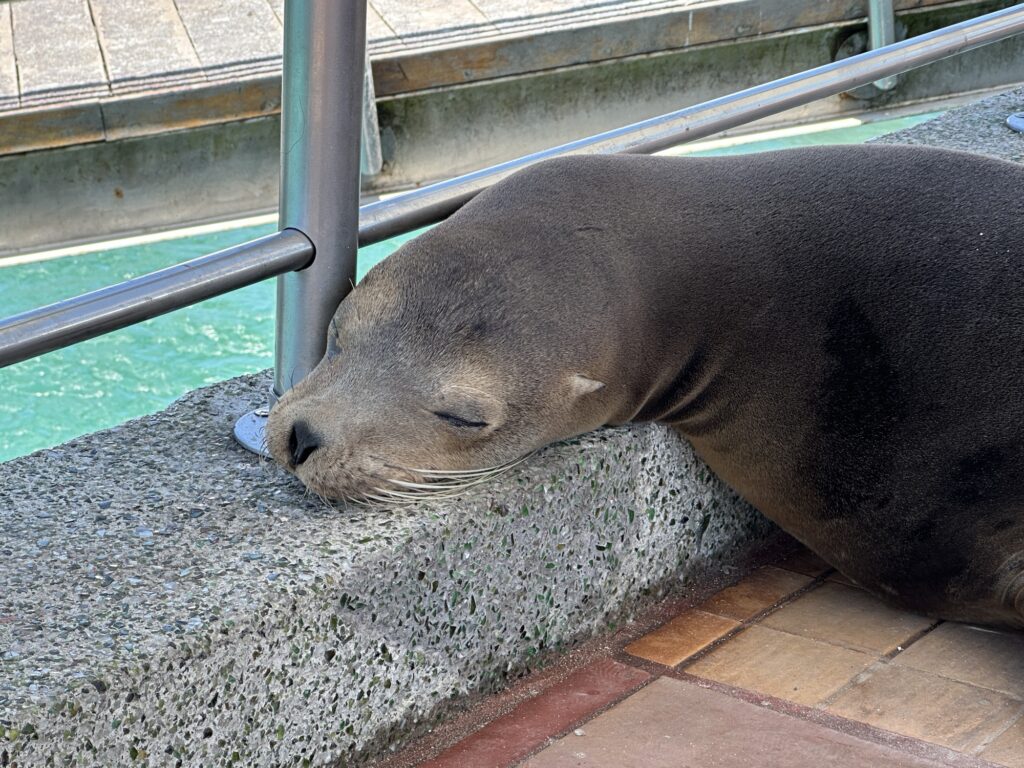
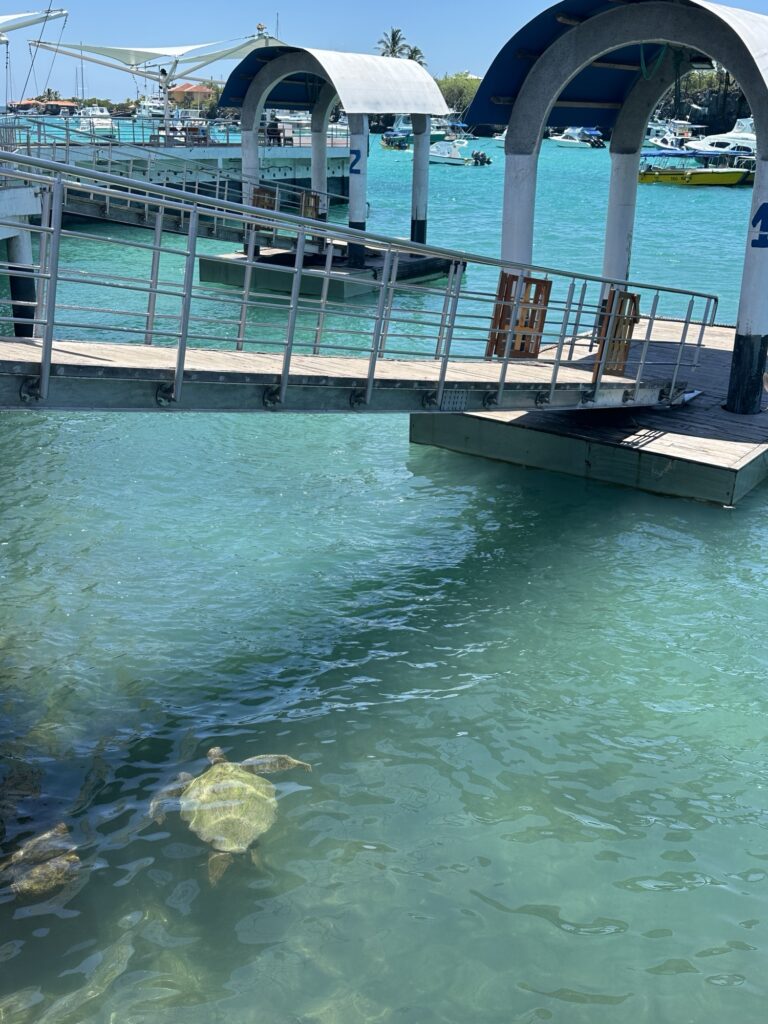
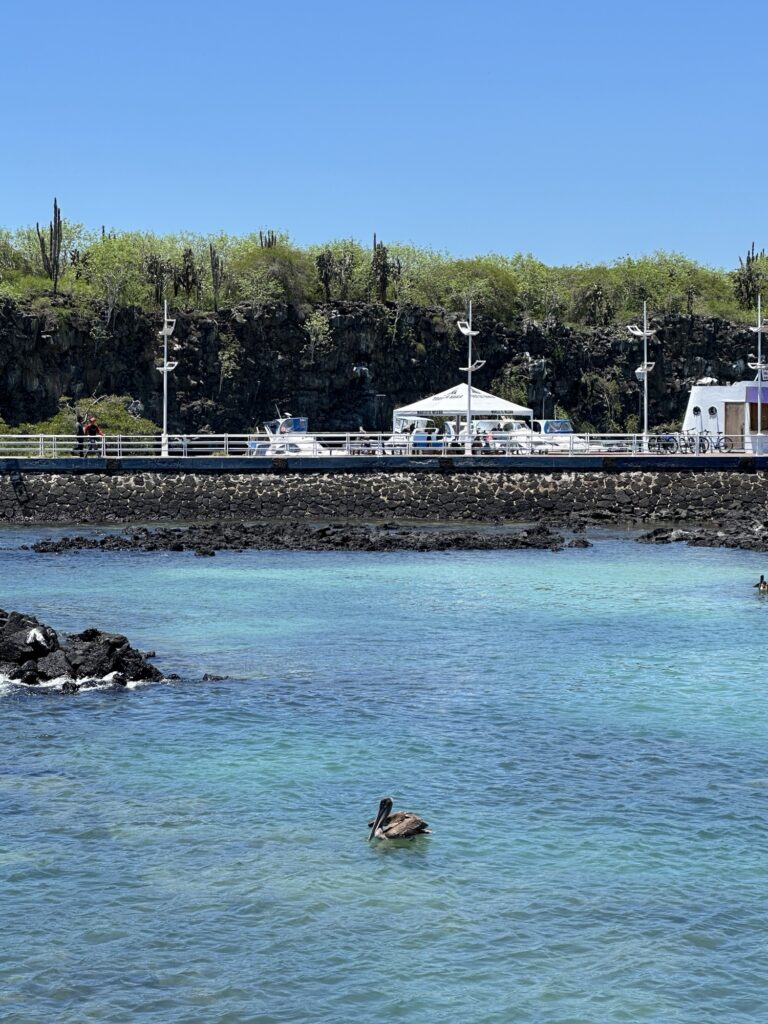
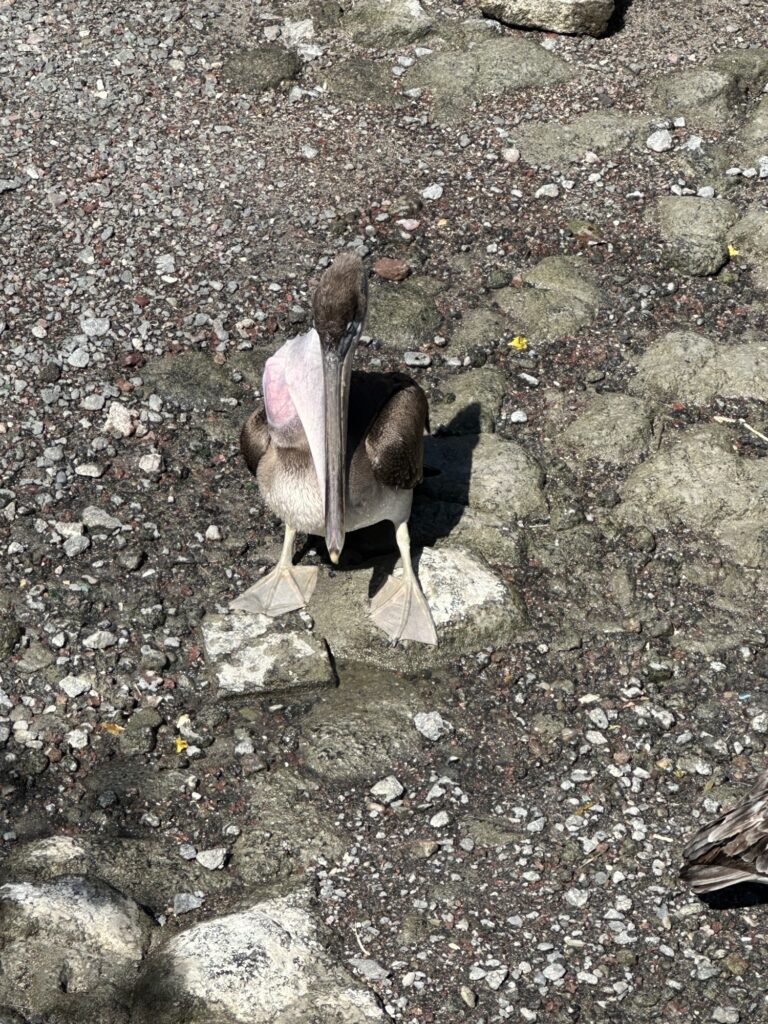
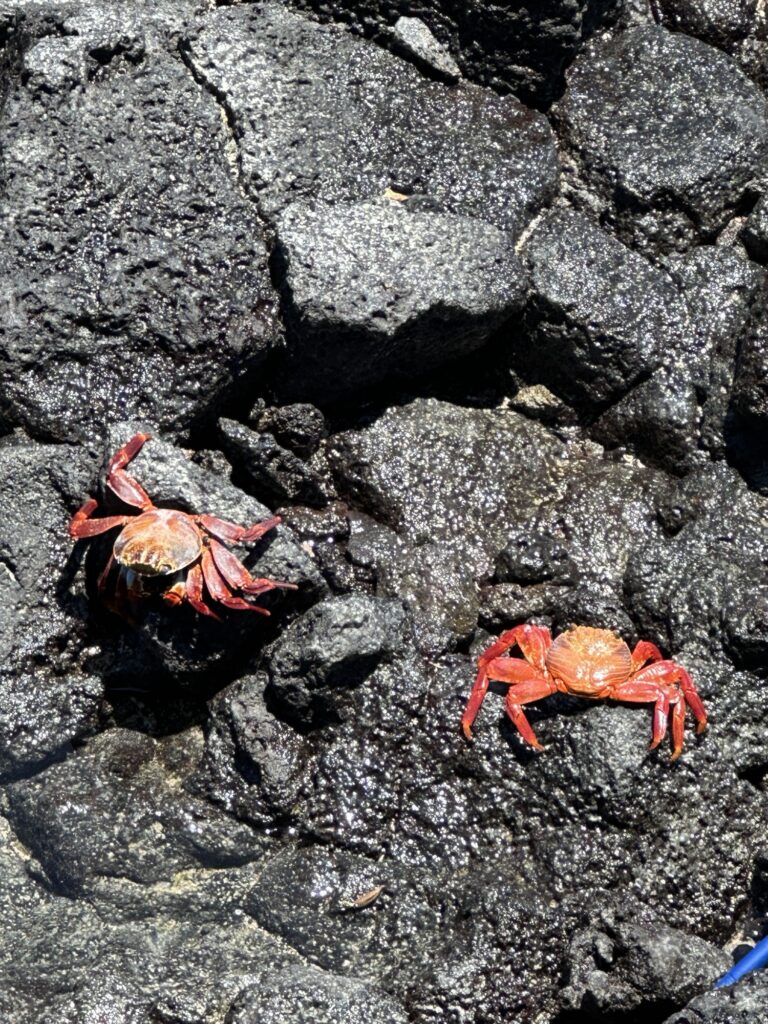
All of these animals we observed just from the dock, and before we even got to take the obligatory picture in front of the tourist sign.
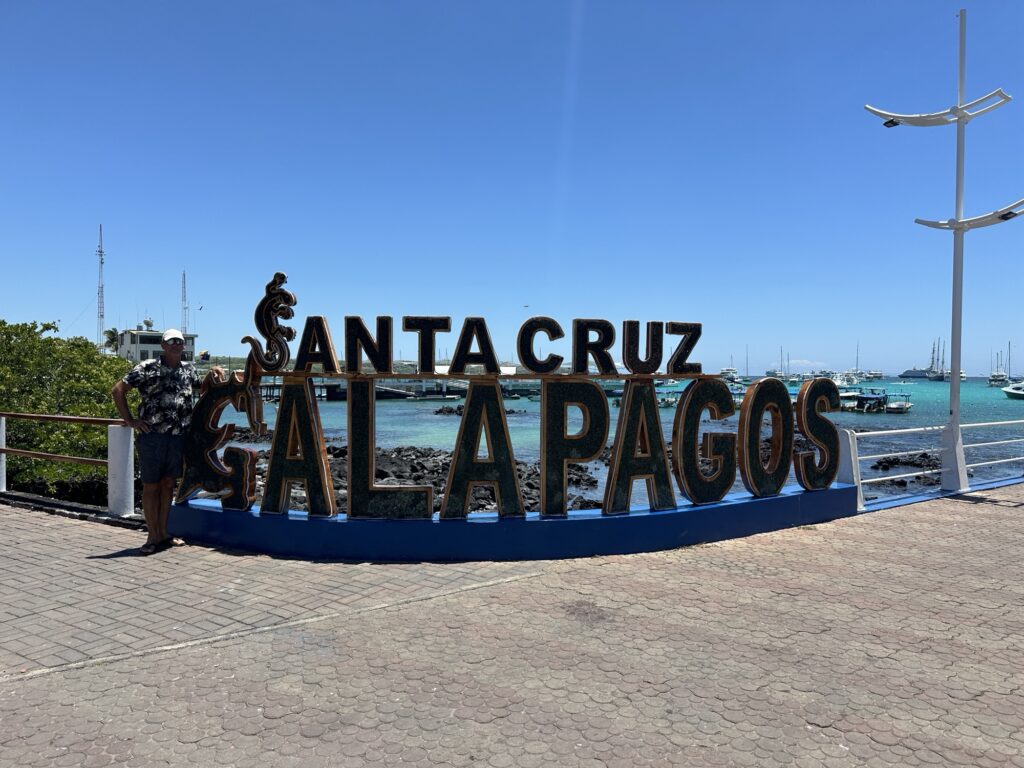
Puerto Ayora is Galapagos’ tourist center and largest town, with 15,000 inhabitants. It is also an active fishing village, with small fish markets spread out throughout the town.
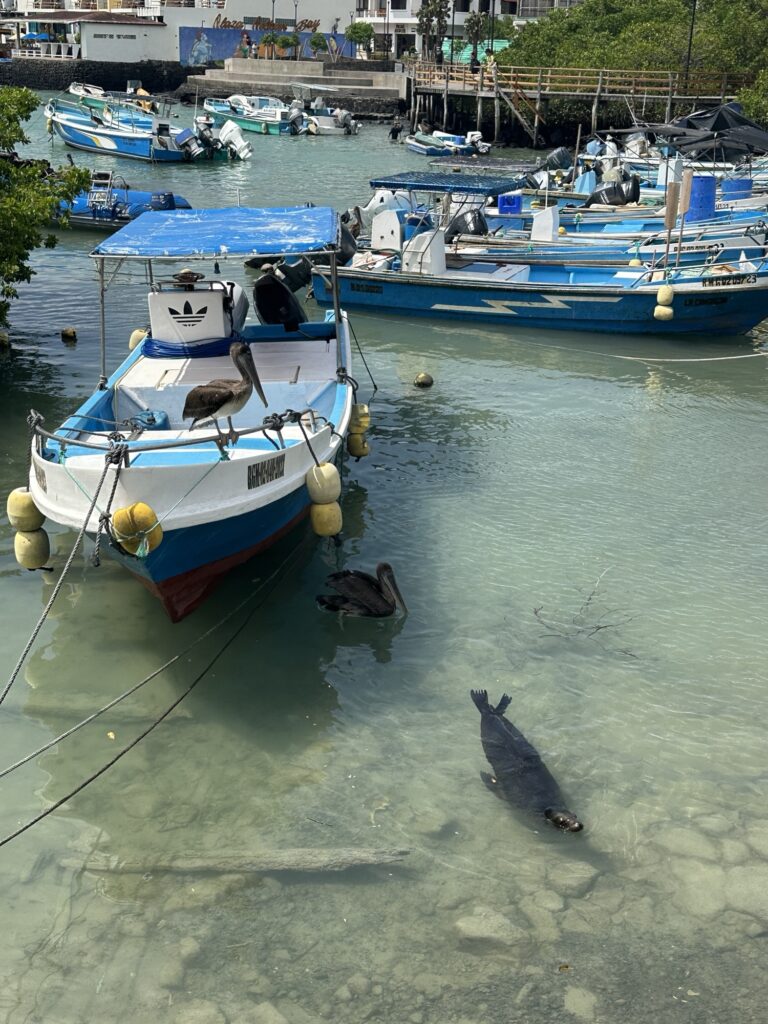
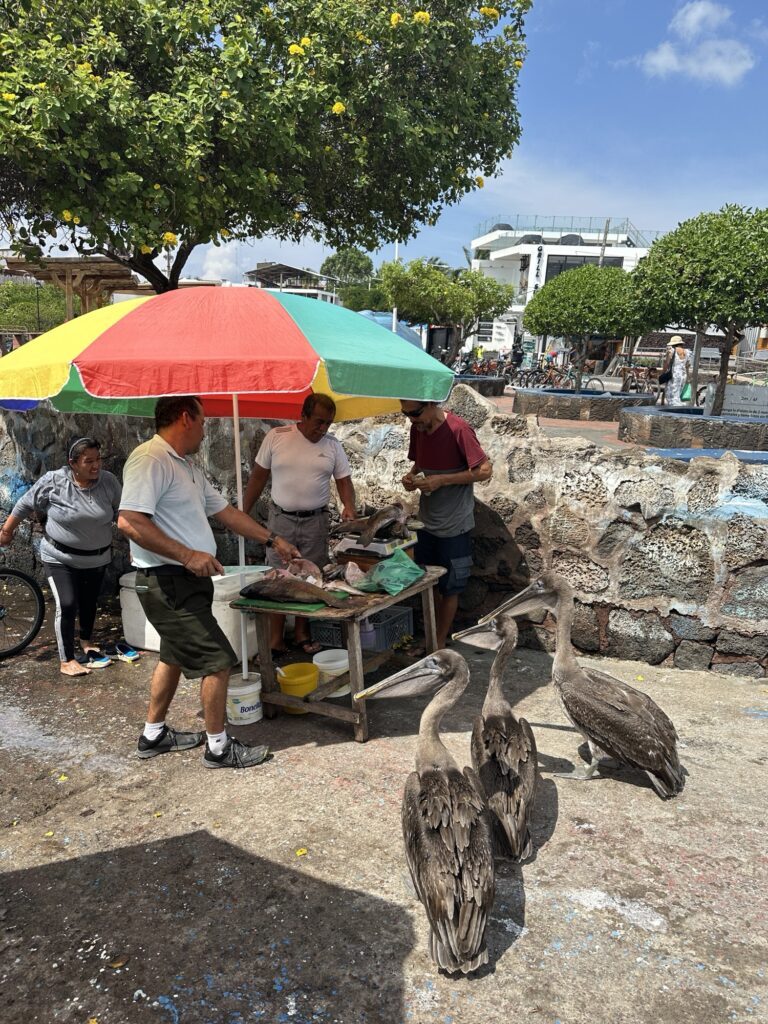
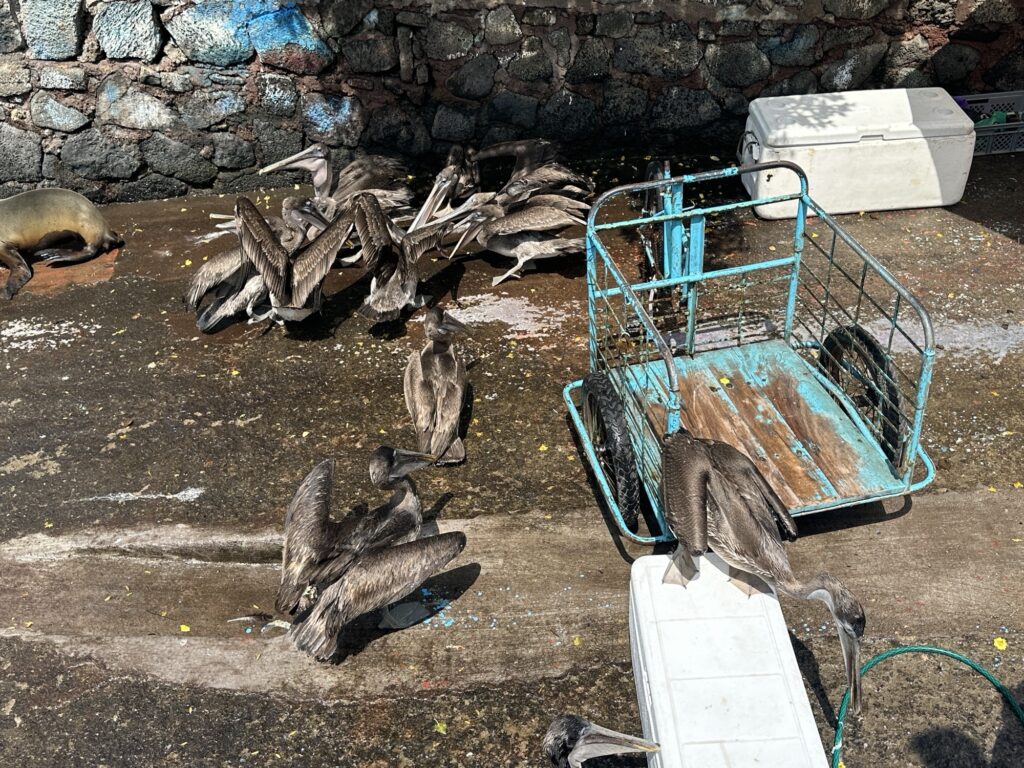
After we had explored the town for a while, we learned that this is THE place for craft beer. We quickly changed our focus from touring hot streets, to seeking cold craft beers 🍺
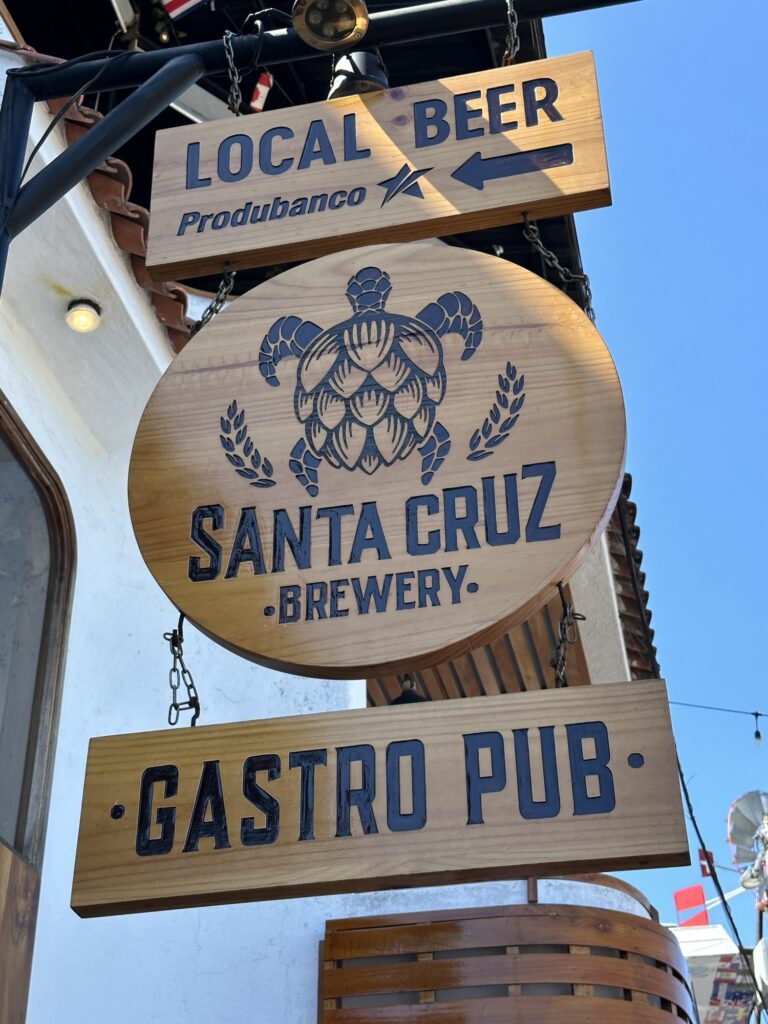
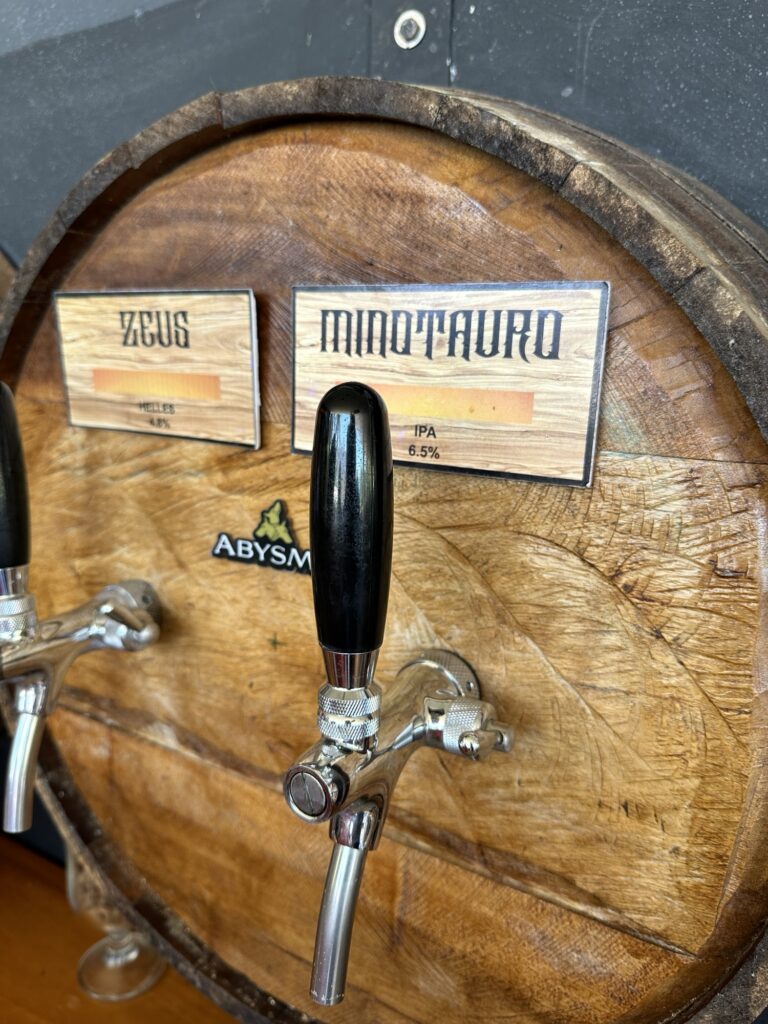
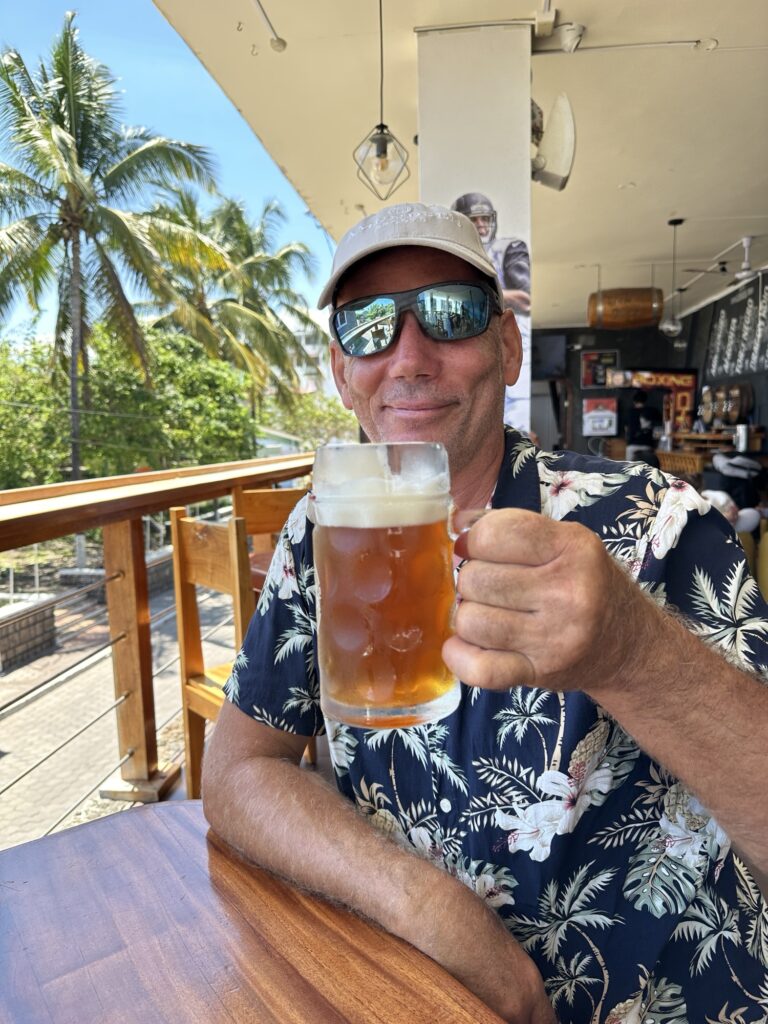
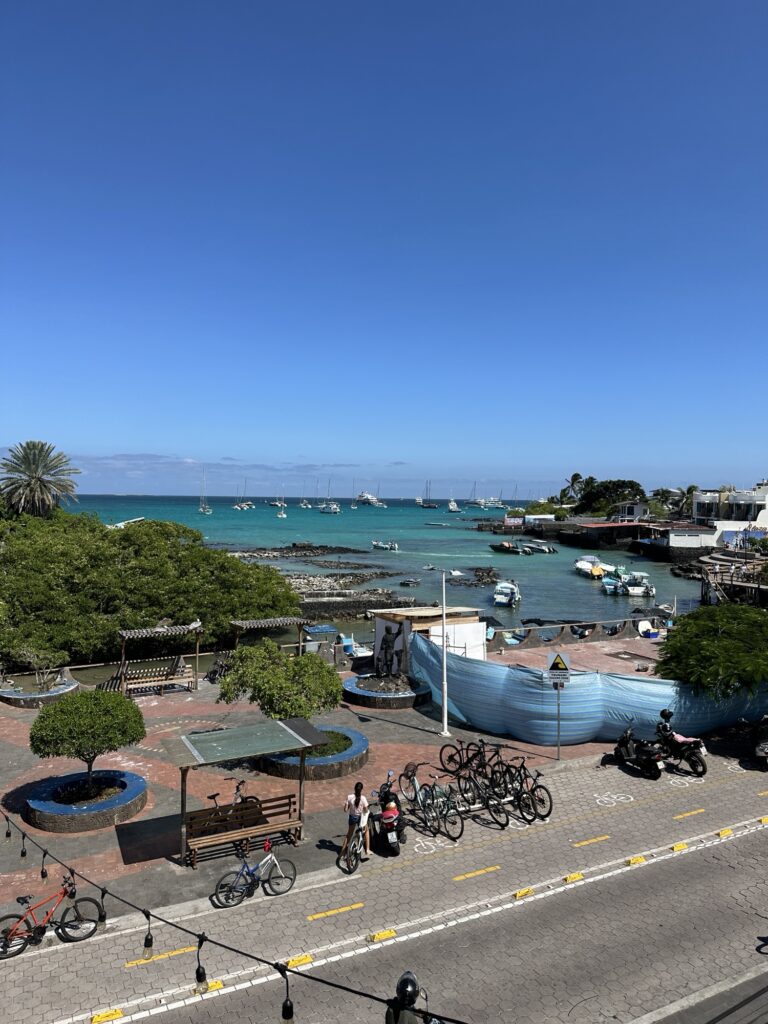
There were quite a big number of sailboats associated with a couple of rallies while we were there, which made the anchorage especially tight some of the days. The World Arc Rally had 28 boats visiting and The Oyster Rally had 24 boats visiting while we were there. Both of these rallies sail around the world in 18 months, and are in more of a hurry than us. So, after the first couple of weeks, things started to slow down, with sailors like us, taking their time, starting to show up.
It was nice to hang out with fellow sailors whom some of them we had already met in Panama City.
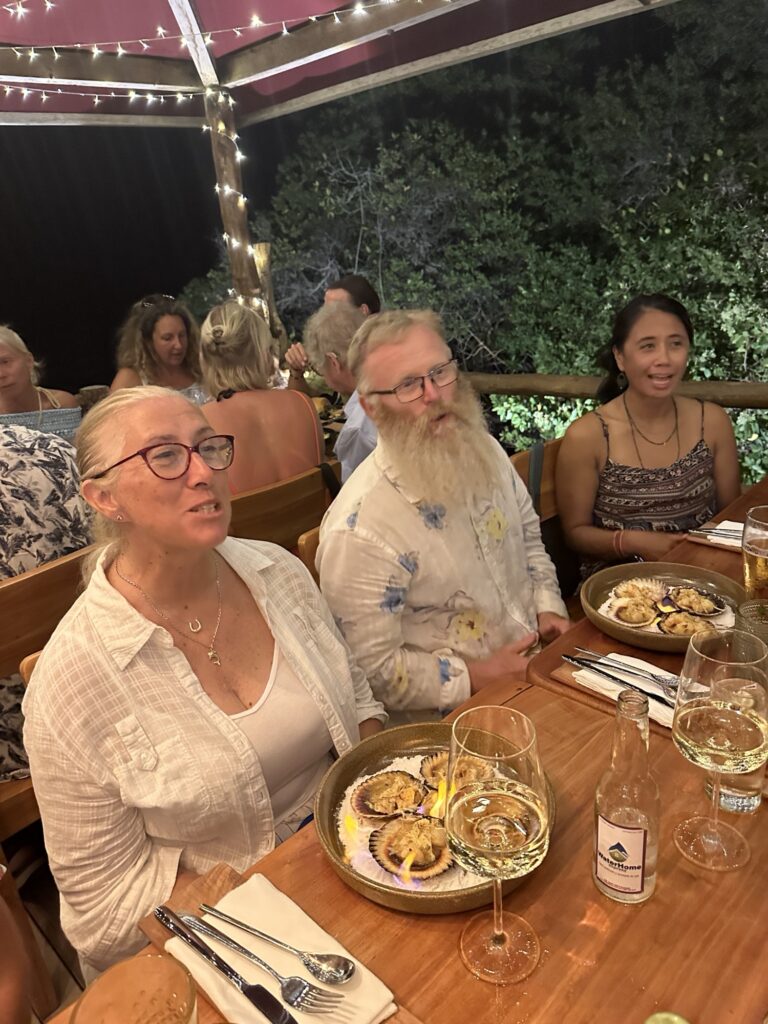
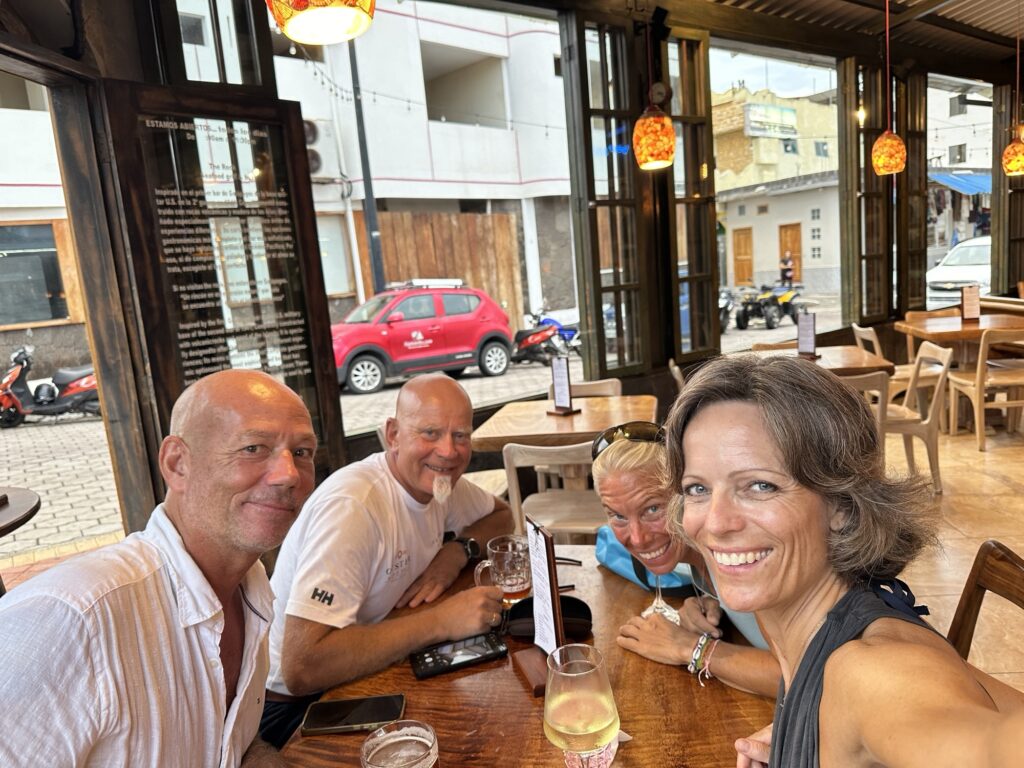
Galapagos is volcanic, and all islands have impressive shapes, often with several volcanoes inland. On Santa Cruz, there are no active volcanoes and the highest point on the island is 864 meters above sea level. The highlands, as this is called, is cooler than the coastal areas, and also get quite a lot of rain. This is where all of the farms can be found, as well as the giant land tortoises, which are endemic to Galapagos.
We felt especially sporty one day, and decided to bike the 17 kms (one way, ended up being total 34kms) to one of the tortoise ranches in the highlands.
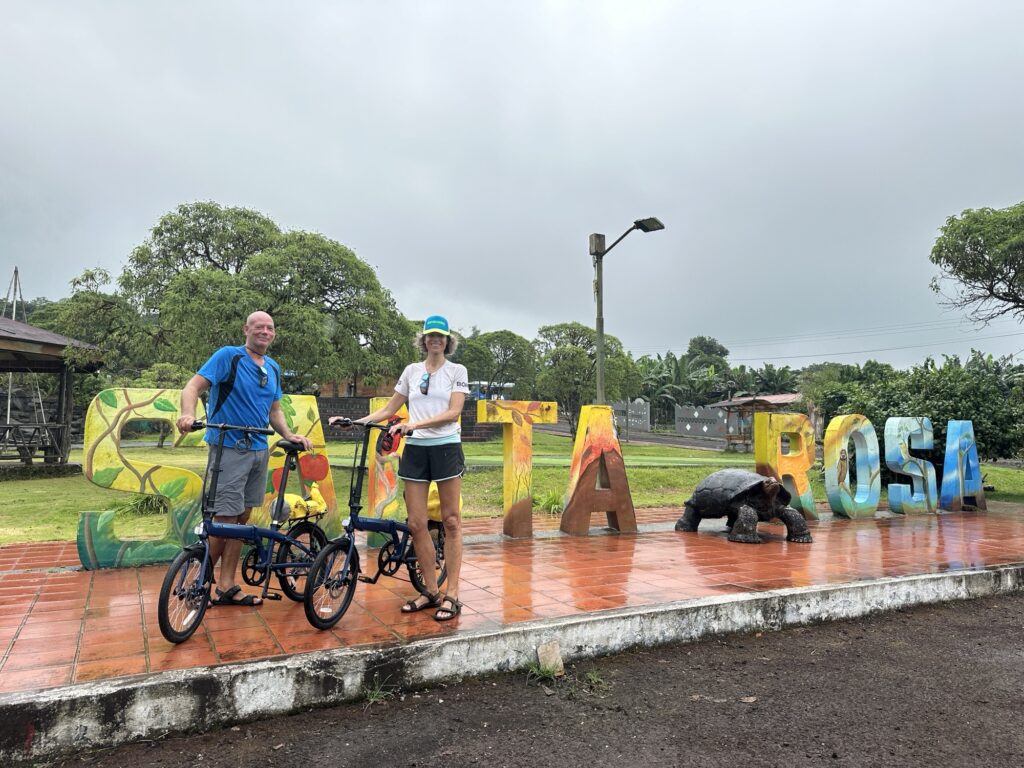
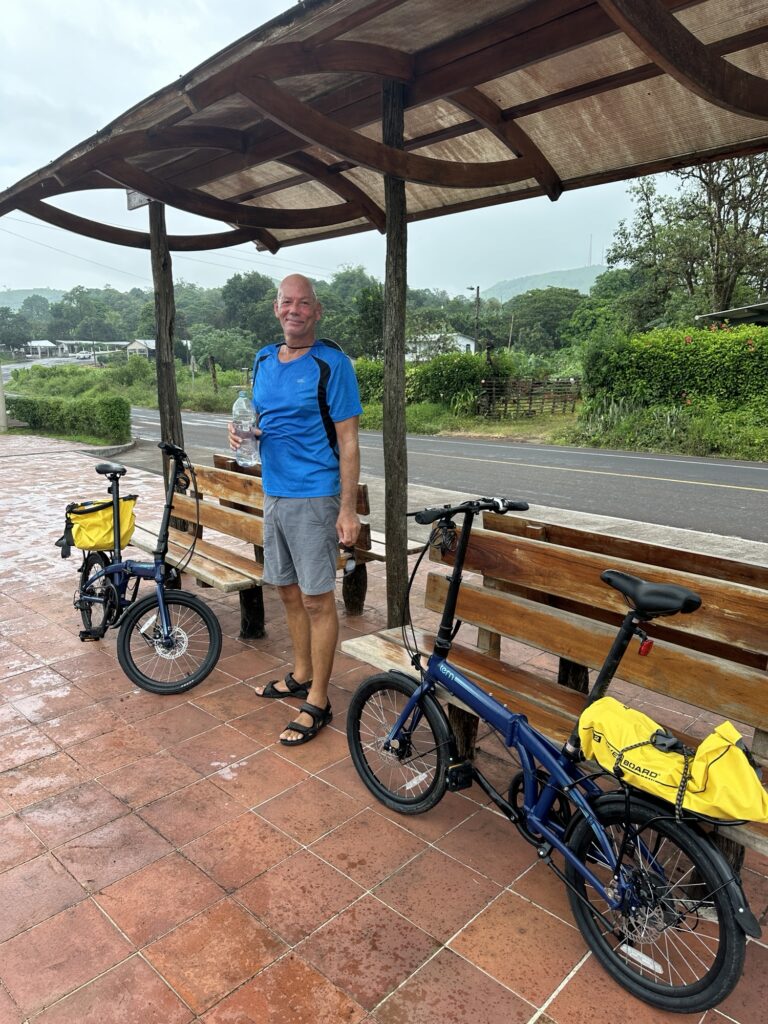
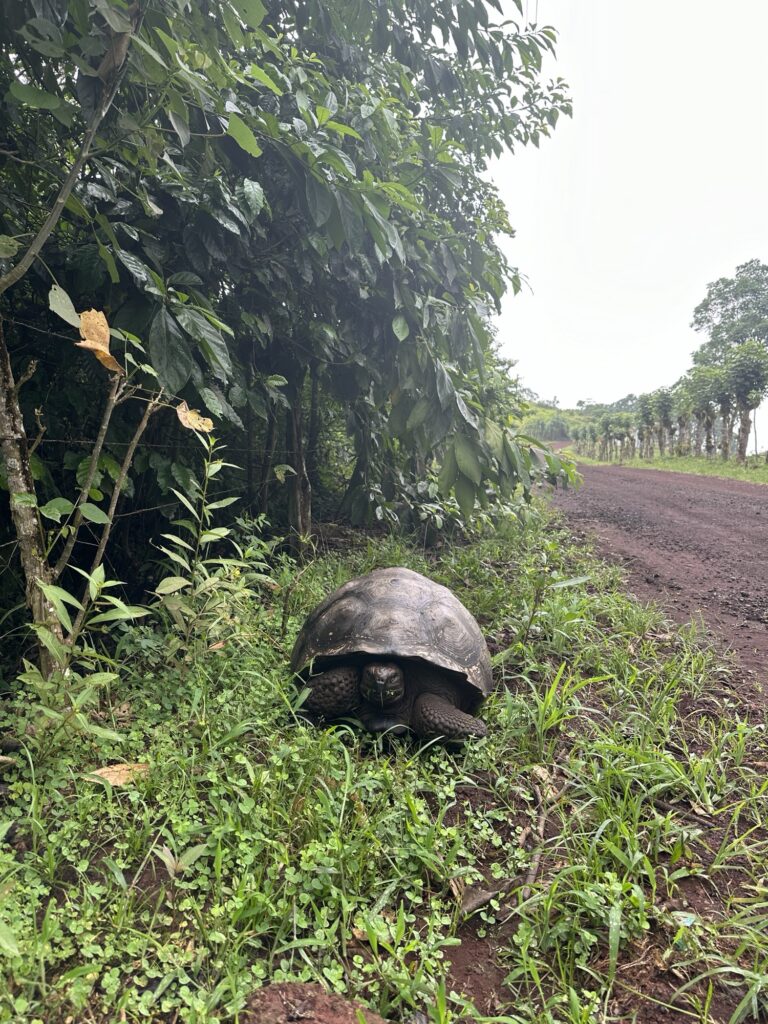
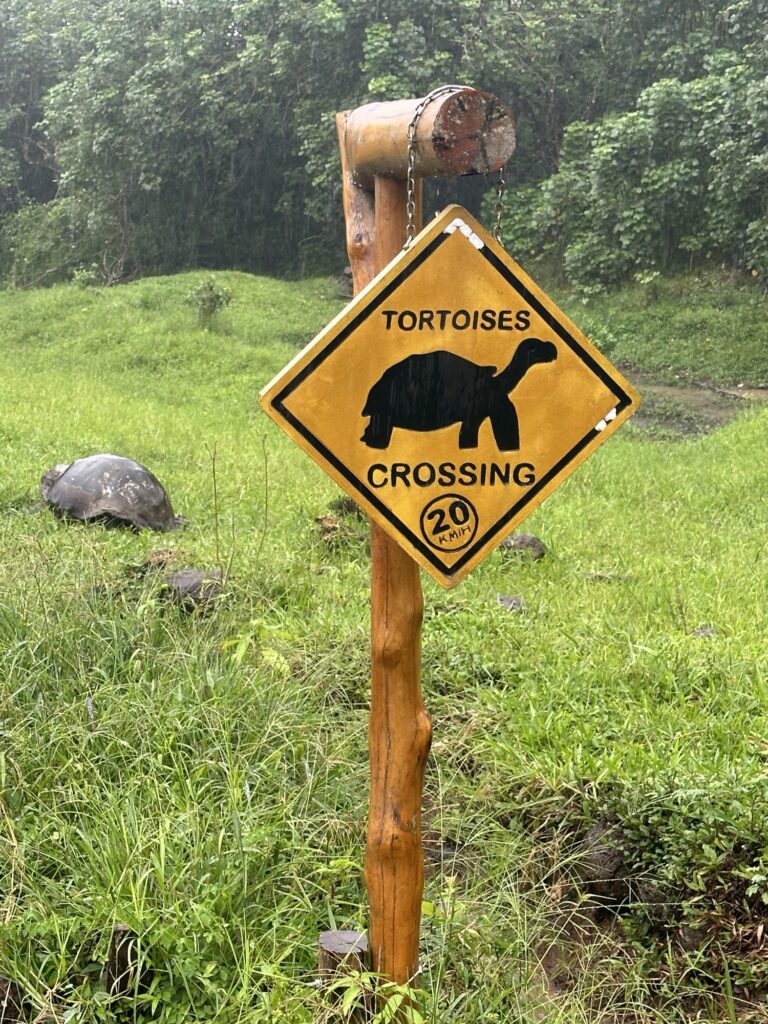
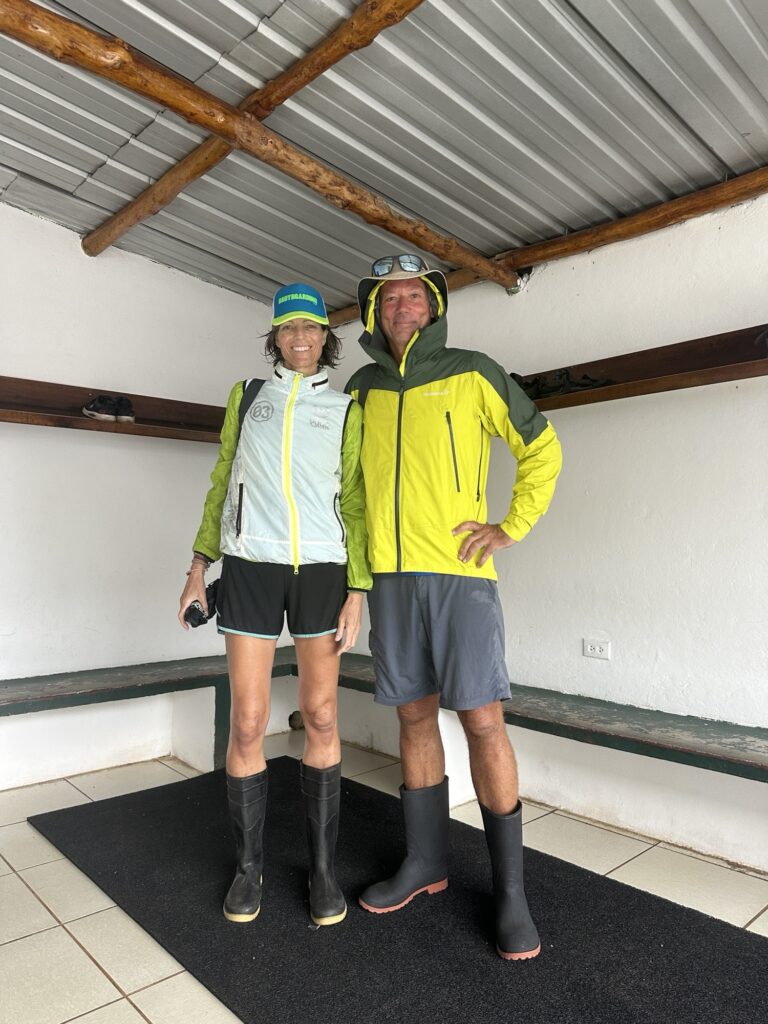
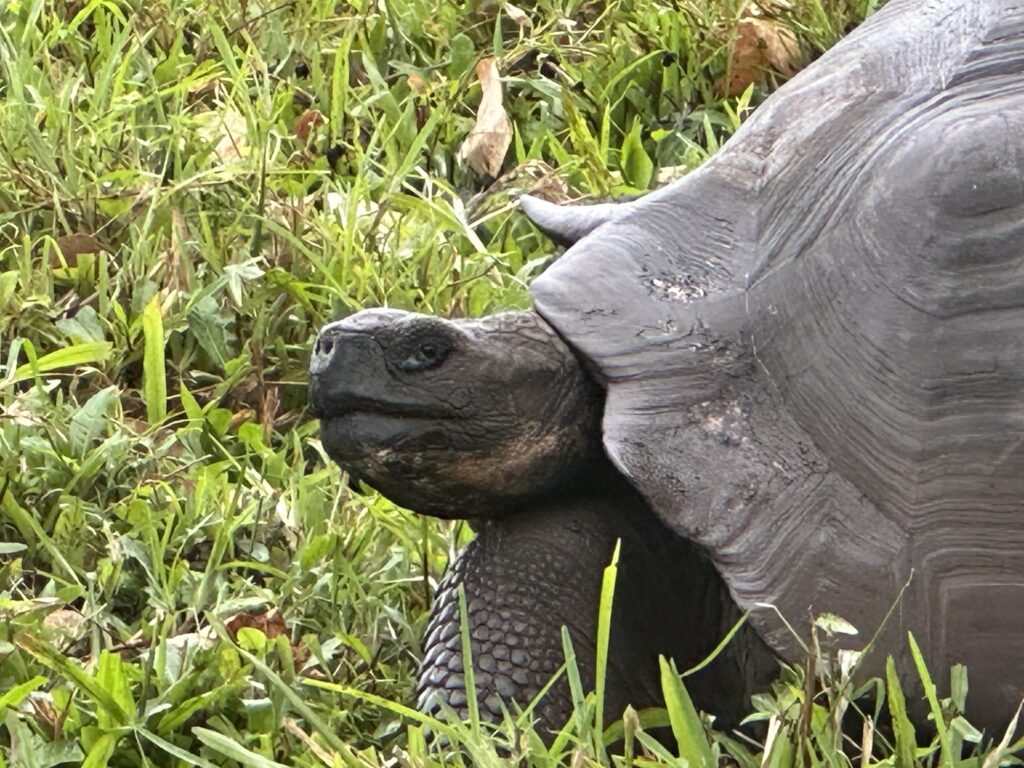
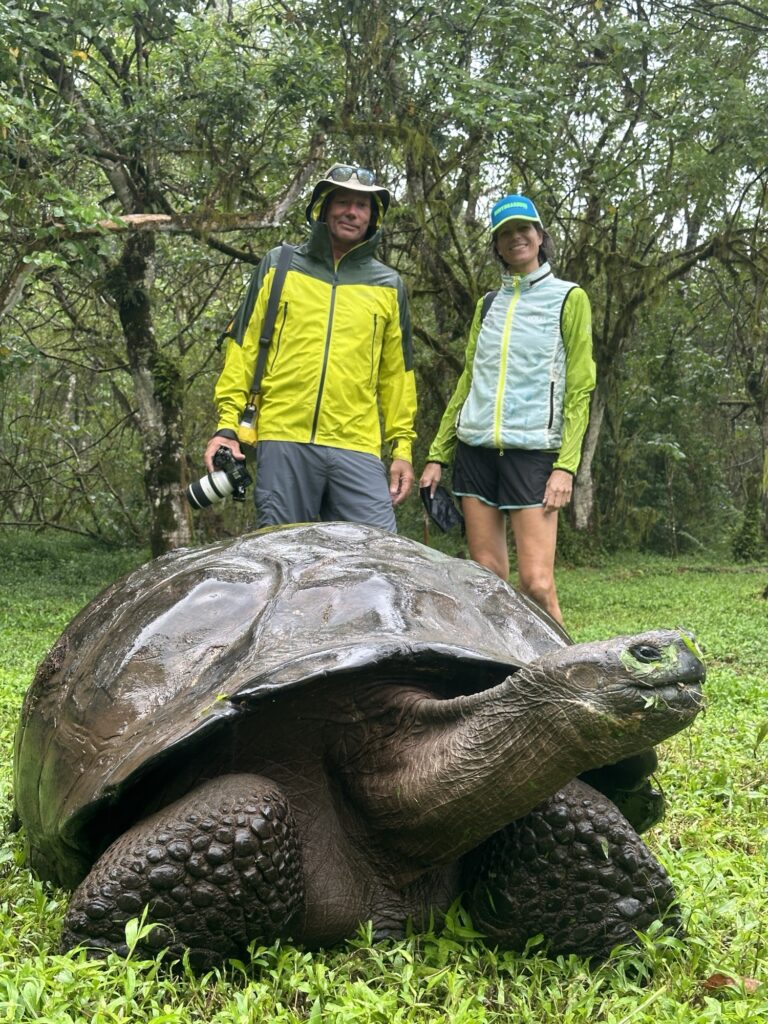
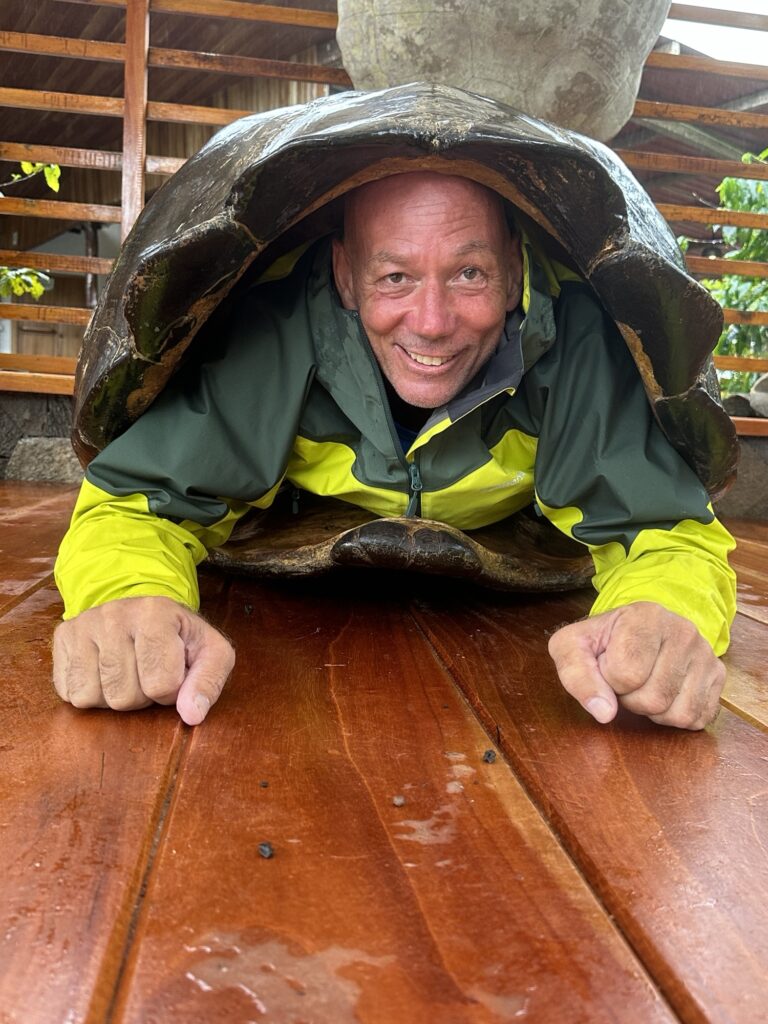
While in the highlands, we also visited one of the many lava tunnels that can be found there. It looks like a man dug tunnel, but it was in fact running lava that has carved out a perfect tunnel under ground.
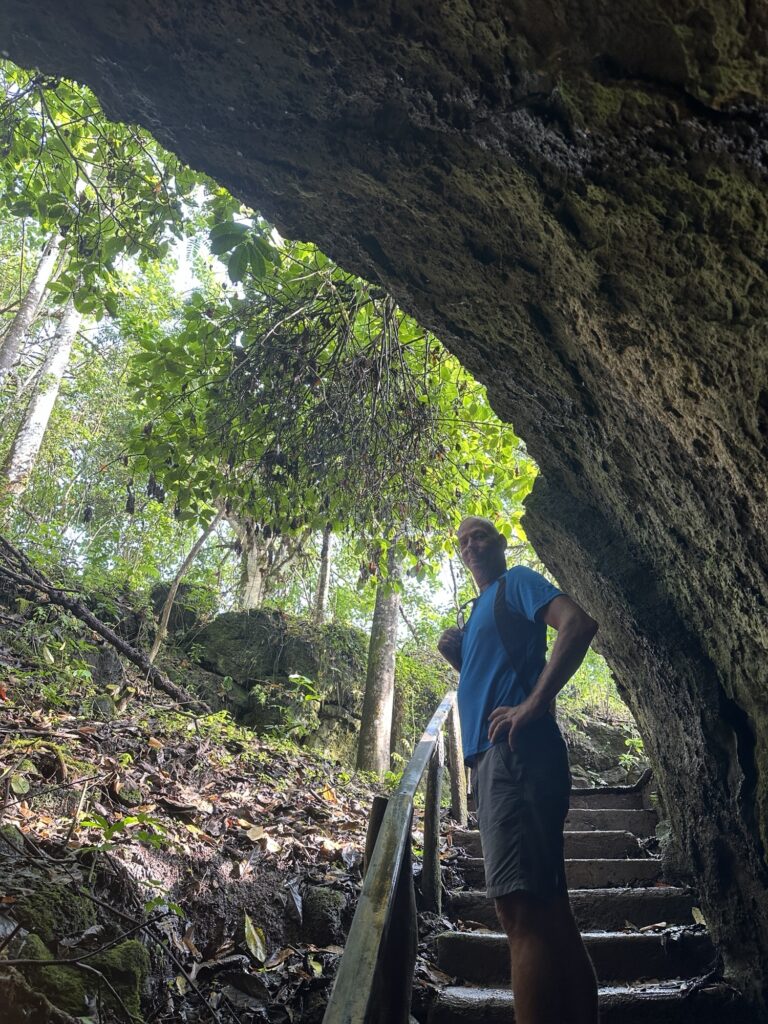
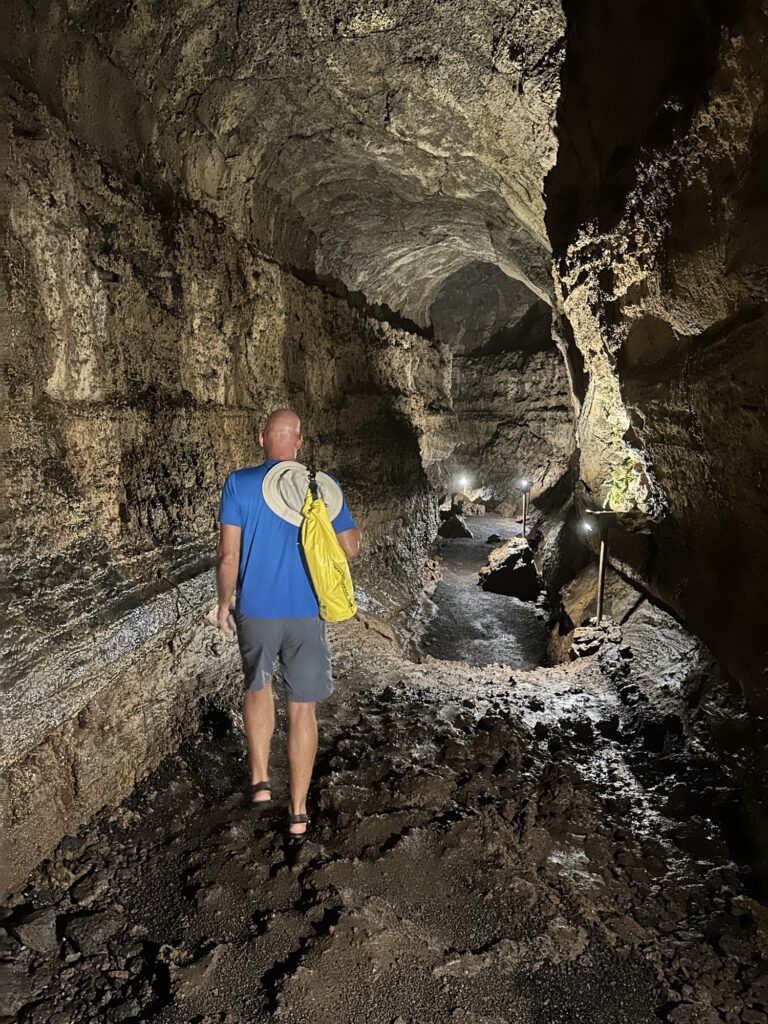
There are also many destinations to explore closer to town, and one day, we took a water taxi two minutes from our boat, followed by a ten minute hike, to Las Grietas, which is a natural pool.
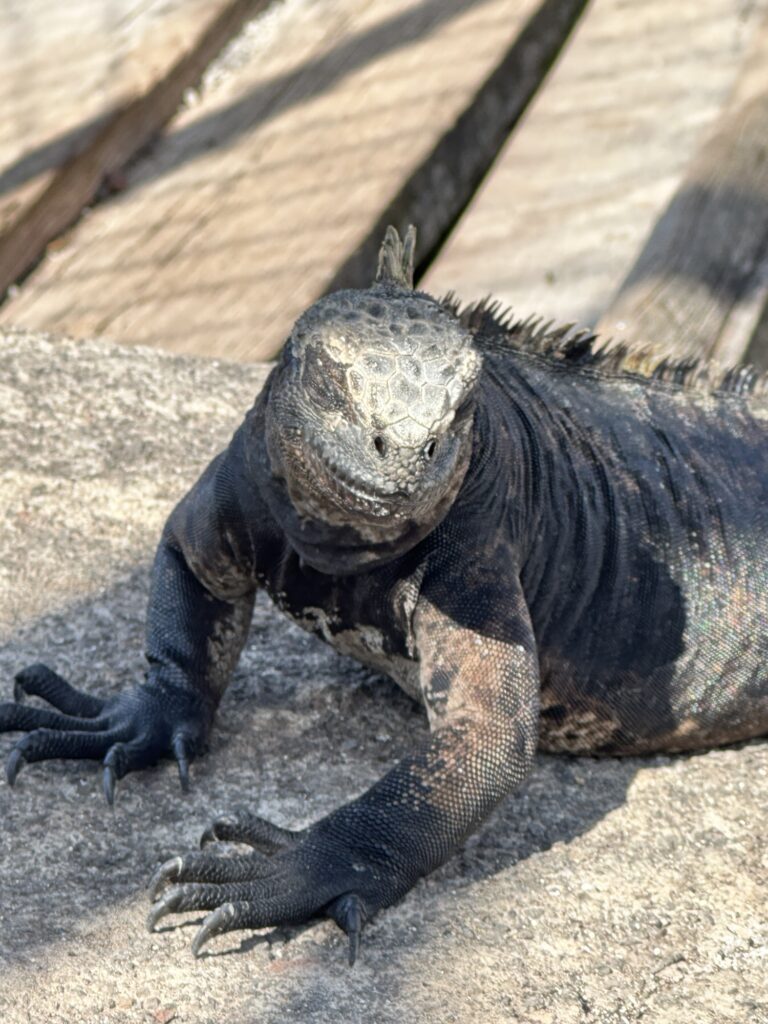
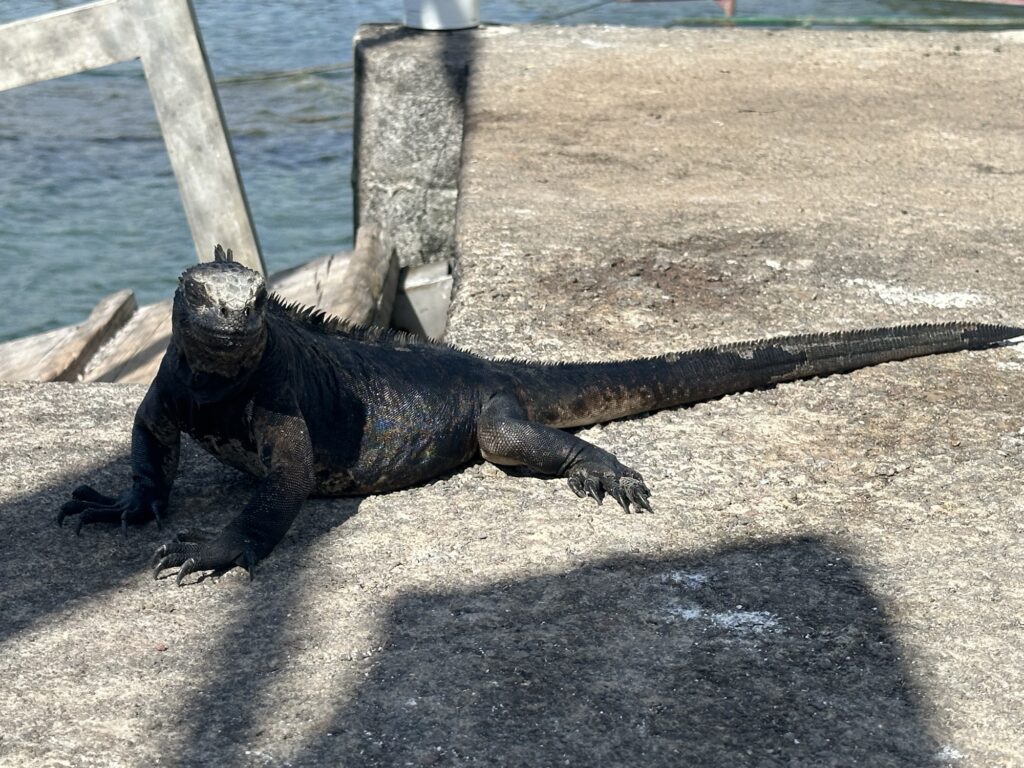
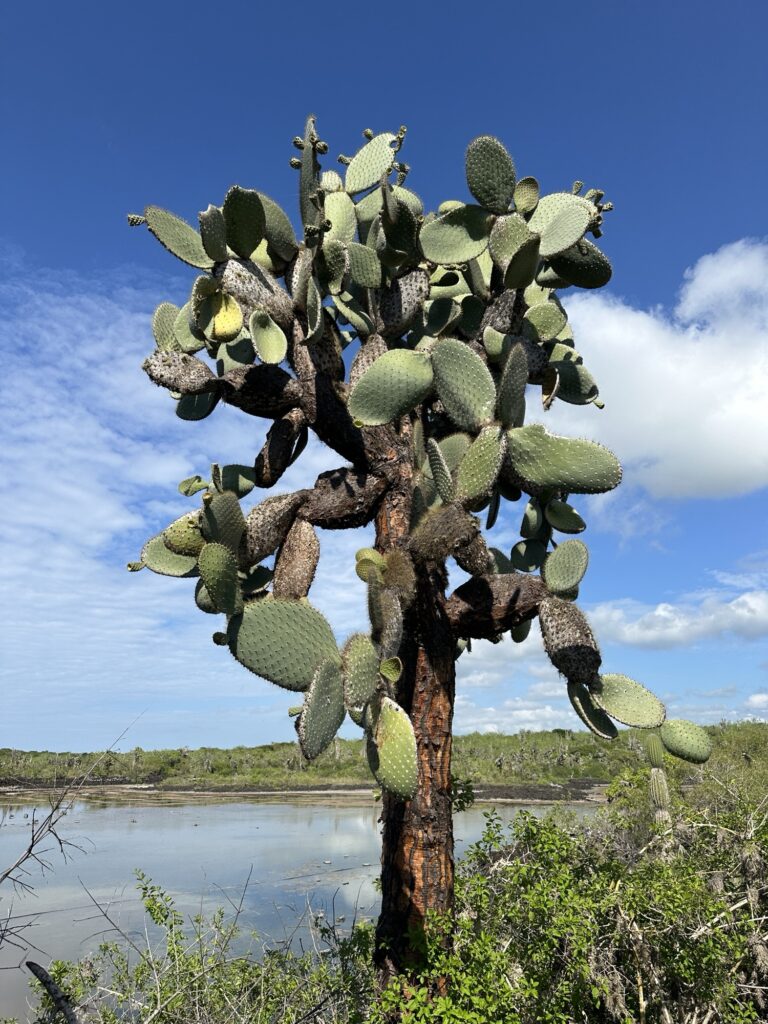
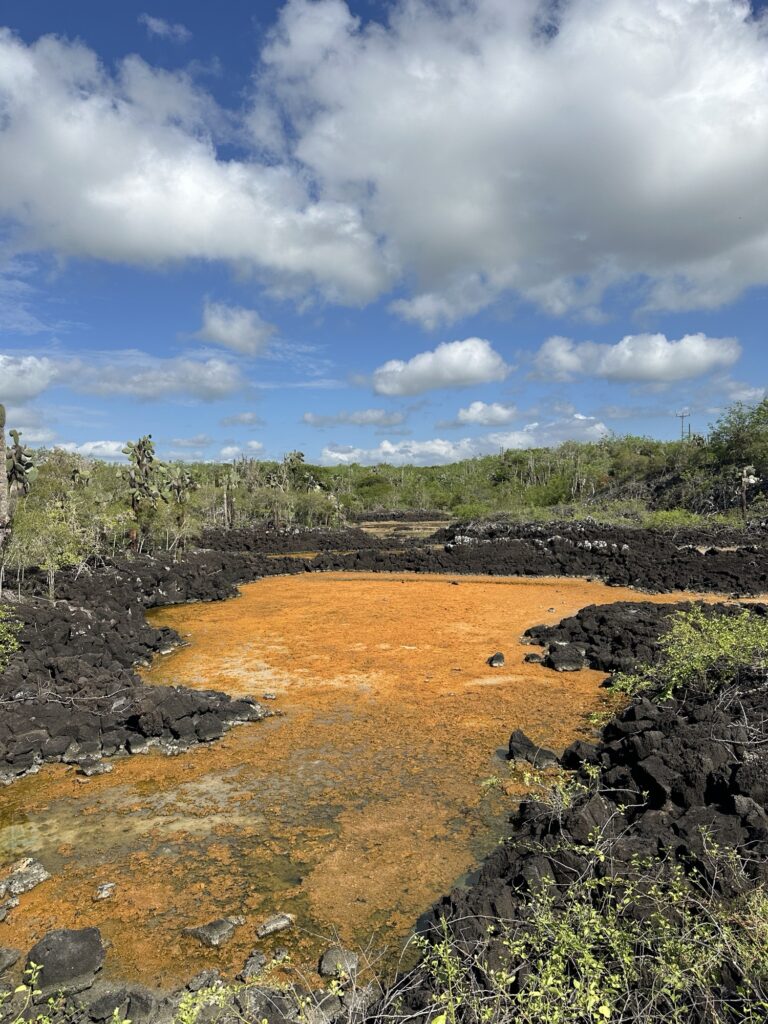
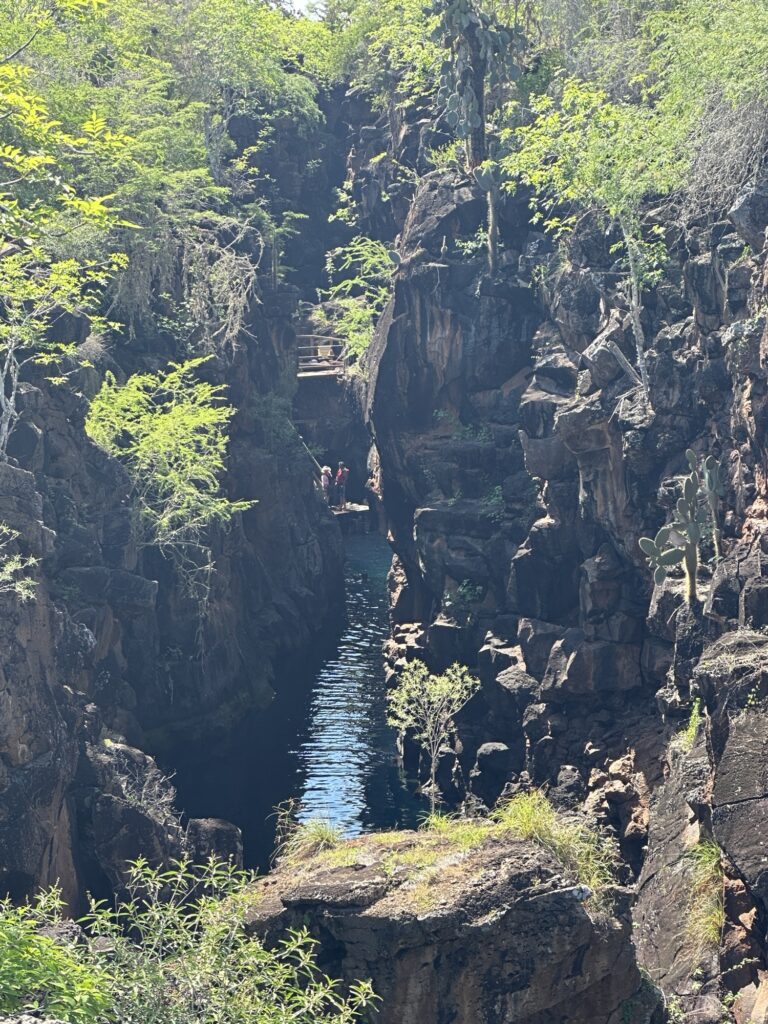
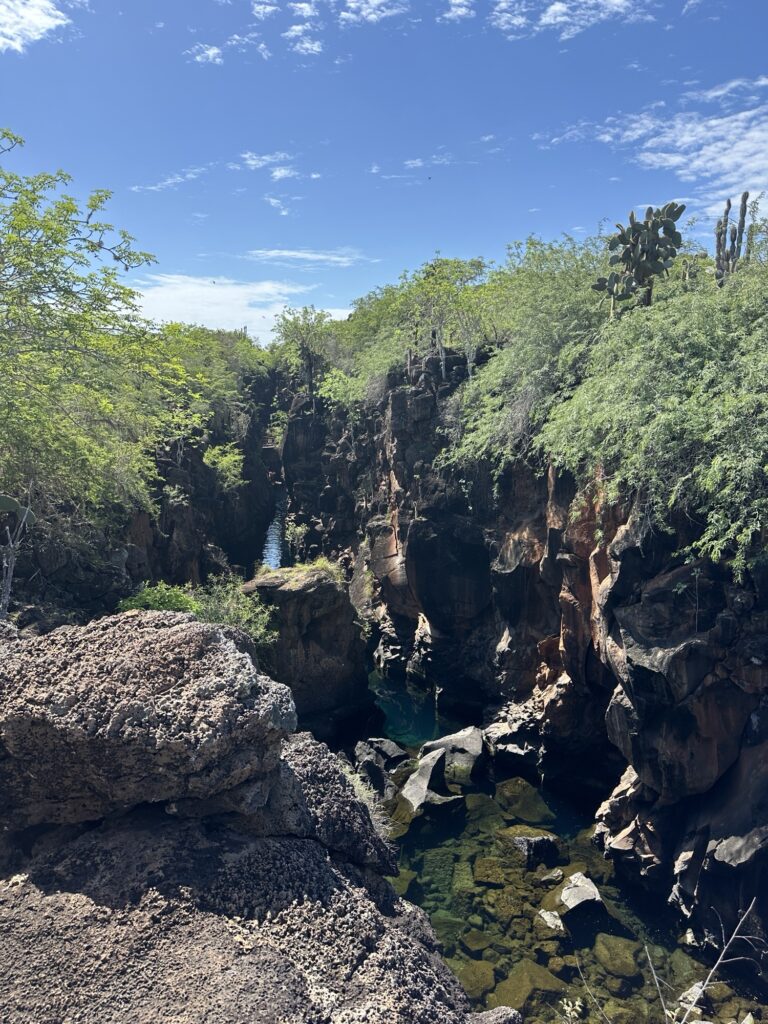
There is also amazing life under water in Galapagos, and after some time enjoying Puerto Ayora and the surrounding areas, we decided to search for a dive cruise to explore some of the more remote areas. Most people book these cruises about one year in advance, and they are very popular, as they are known for their access to unique diving experiences.
As we are already here, it is easy to get a full overview of available cruises we could join. We were very lucky that we were here right before a holiday (Easter), which meant that there were many available last minute tickets. We booked our cruise a few days ahead of its departure.
We took a test dive locally a few days before, to test our gear in the high salinity waters of Galapagos.
The dive was on a rock formation in the middle of the ocean, just east of Santa Cruz, called Gordon’s Rock. The visibility was so-so, but we did see our first hammerhead sharks, which this region is so famous for. It gave us a good indication of what we can expect to see on our dive cruise!
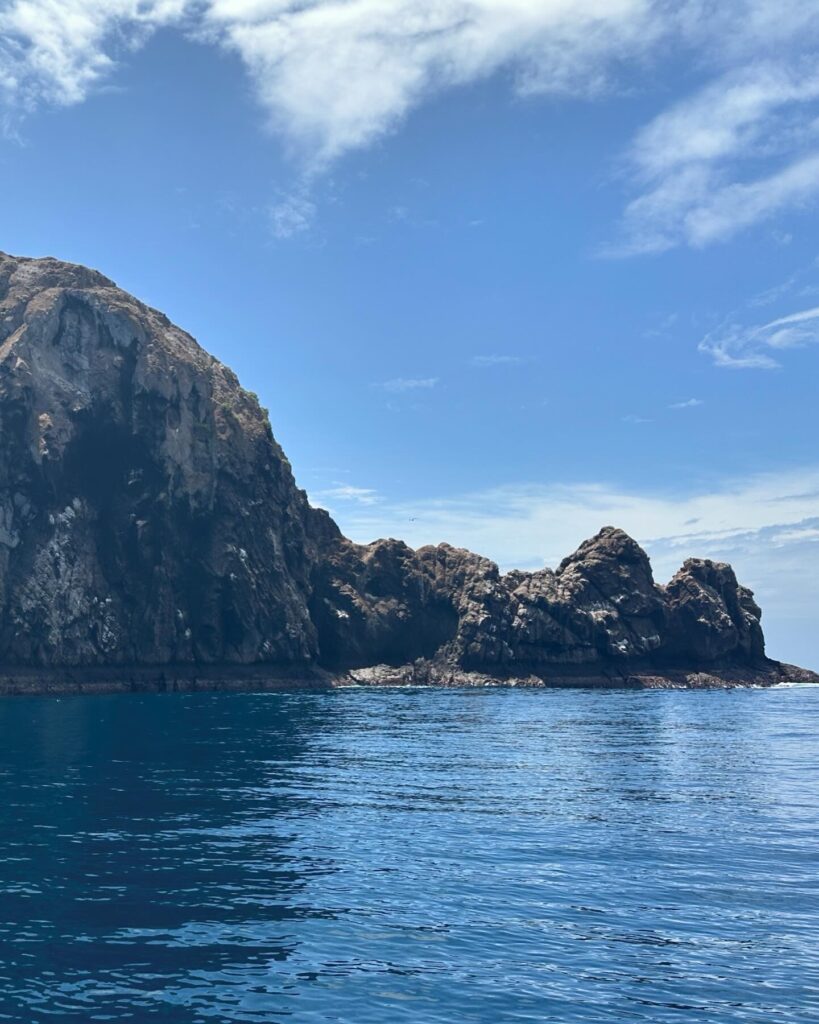
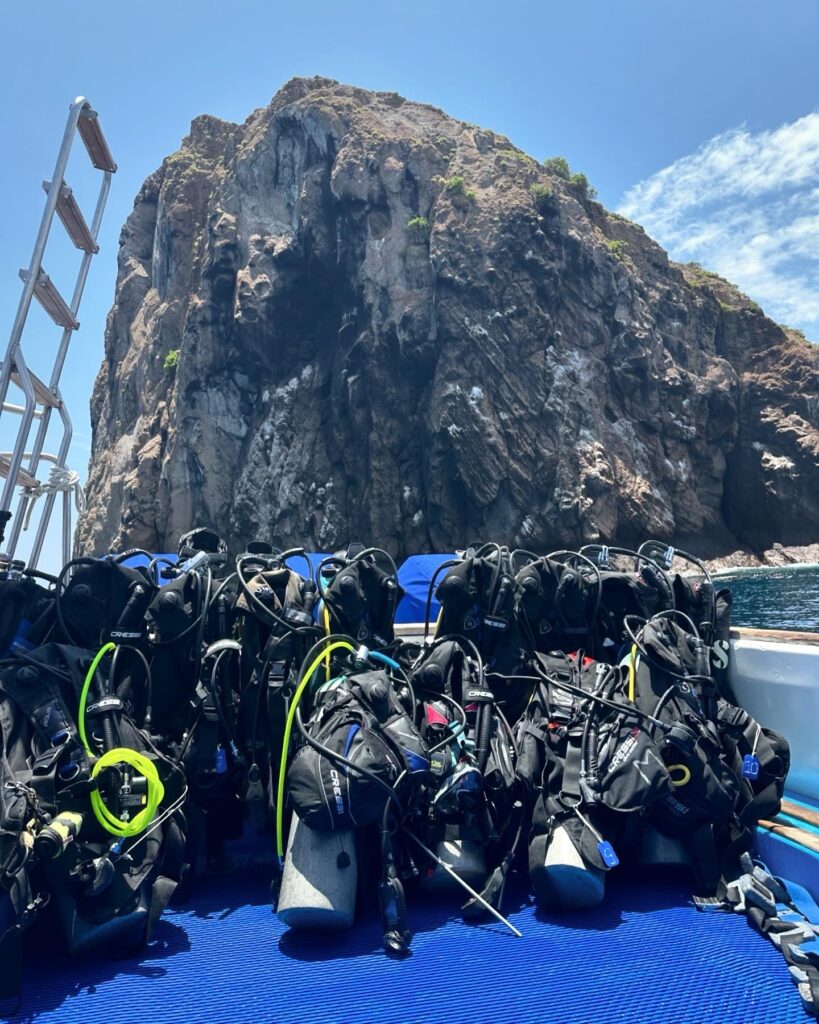
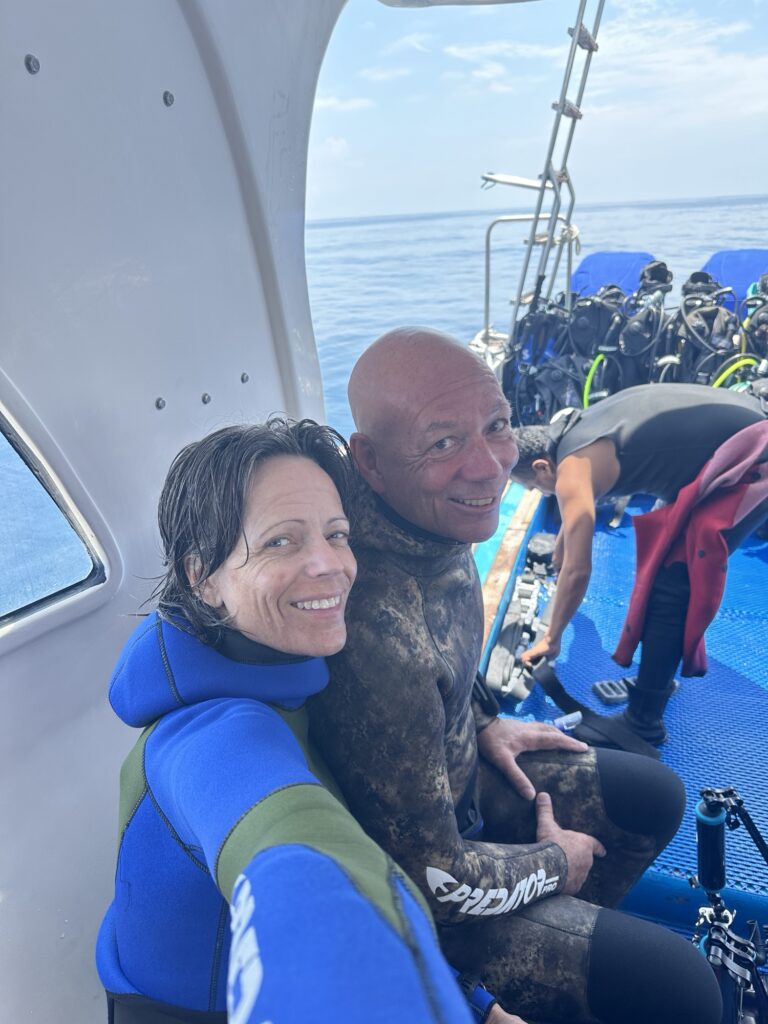
We spent about two weeks in Puerto Ayora, Santa Cruz, before heading off on the dive cruise. We prepped thoroughly, ensuring that our anchor was sitting. We also hired a local guy who worked in the harbor that would check out our boat daily. And, several neighboring sailors offered to watch after Noxoma. The sailing community sure is supportive 🥰
The Ecuadorians have been truly remarkable in taking care of this area, and to explore it fully, we will take full advantage of our time here. We truly are in some of the world’s most breathtaking places, with so many endemic species. We like it so much here, that we probably will stay close to our 60 day limit, and will also be visiting the three other islands (Isla Isabela, Isla Floreana and Isla San Cristobal) we have access to.
